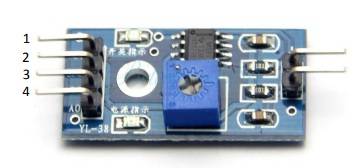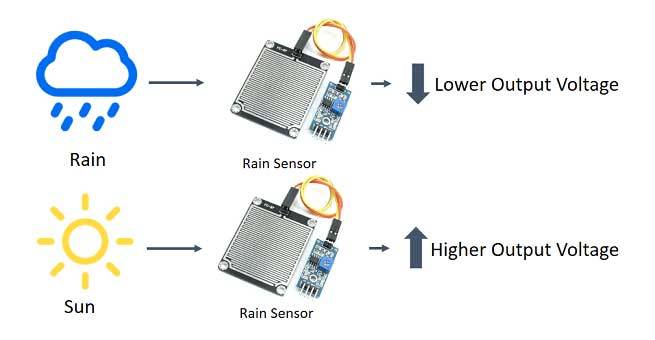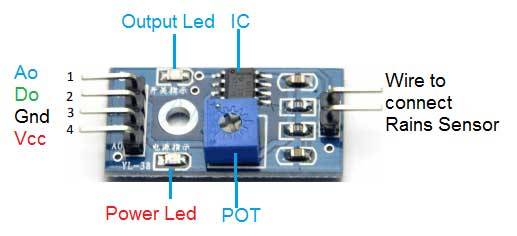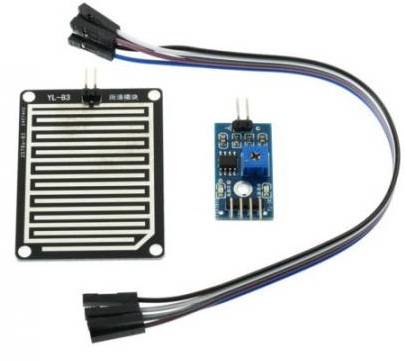Sensor namely rain sensor which is employed to detect the rain and generate an alarm. So, we will conserve water to use it later for various purposes. There are several methods available for conserving water like harvesting, etc Using this method we will increase the extent of underground water. These sensors are mainly utilized in the sector like automation, irrigation, automobiles, communication, etc.
What is a Rain Sensor?
A rain sensor is one kind of switching device which is used to detect the rainfall. It works like a switch and the working principle of this sensor is, whenever there is rain, the switch will be normally closed.
Rain Sensor Module
The rain sensor module/board is shown below. Basically, this board includes nickel-coated lines and it works on the resistance principle. This sensor module permits to measure moisture through analog output pins & it gives a digital output while moisture threshold surpasses. This module is analogous to the LM393 IC because it includes the electronic module also as a PCB.
Here PCB is employed to gather the raindrops. When the rain falls on the board, then it creates a parallel resistance path to calculate through the operational amplifier. This sensor may be a resistive dipole and supported the moisture only it shows the resistance. for instance, it shows more resistance when it’s dry and shows less resistance when it’s wet.
Specifications
The specifications of the rain sensor include the following.
- The required voltage is 5V
- For easy installation, it uses bolt holes
- Anti-conductivity & oxidation with long-time use
- The size of the small PCB is 3.2cm x 1.4cm
- This sensor module uses a good quality of double-sided material.
- The sensitivity can be adjusted by a potentiometer
- It uses an LM393 comparator with wide voltage
- The output of the comparator is a clean waveform and driving capacity is above 15mA
- The area of this sensor includes 5cm x 4cm and can be built with a nickel plate on the side
Read more Microcontroller Sensors
- Passive Infrared Sensor PIR
- Soil Hygrometer Detection Sensor
- Microphone Sensor
- Light Detection Resistor Sensor LDR
- Thermal Sensor
- Rotary Encoder Sensor
- Gas Sensor
- Force Sensor
- Accelerometer Sensor
- Temperature Humidity Sensor
- RF Transmitter Receiver
- Barometric Pressure Sensor
- Flame Sensor
- Current Sensor
- Flex Sensor



